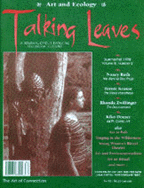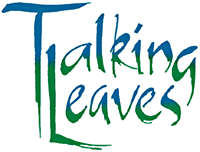

His unconsidered response answered his own well-considered question, yet the question rang in my ears. What, as a sculptor, did I have to show for myself? ...workshop projects, no money (but plenty of beans and potatoes from my garden), no carving (but a cob studio-in-progress), and various frustrations and anxieties. As always, however, friends reminded me that faith is the way, and that questions are answers:
Where does beauty come from, if not nature? Who can be an artist without knowing nature? What is knowledge except an understanding, a feel for life, gathered as experience, and expressed, directly or abstractly, sometimes in two dimensions, sometimes in three? Indeed, what is art without earth?
Earth--saturated by rain, warmed by sun, inspired by wind--is the source of beauty. And what is bread, if not the earth we eat? The seed in the soil, brought to life by rain and sun and wind, and transformed again by water, yeast, the baker's hand, and fire. What is communion, but knowledge of God's body, and the blessing of fellowship? Beauty begins by feeding the body whose forms I seek with a chisel in stone, or a pencil on paper. Indeed, what is art without bread? So as I work towards sculpture, I also build earthen ovens, grow a garden, teach, and when people ask, I call myself a sculptor.
"But your stone carving is better," suggests my professor friend, kindly. But what is the measure of art unless it speaks to people, and they respond? An earthen oven is both practical and beautiful, and costs little or nothing. And bread you can eat; art you can't.
Ovens may be unsophisticated and simple, but I agree with Brancusi that "sculpture must be lovely to touch, friendly to live with, not only well-made." Sculpture should be an invitation -- to sit, to rest, to talk; to cook, to make feasts and festivals.
Making an earthen oven is such an invitation, and its full, round form is indeed, "lovely to touch, friendly to live with." But somehow, an oven is not sculpture, despite the fact that it is mass, space, volume, form, beauty. A person who might never consider creating "art" will jump at an opportunity to build an oven. What's the difference? You could say that building an oven is craft not art, but it seems to me that separating art from craft elevates money and status over life and beauty.
Life asks us to participate--not just to watch, not just to learn, but to create; to be whole and wholly involved, rather than apart and alone. You don't have to call yourself an "artist" to engage hands, head, and heart in the genesis of new form and relationship...or to celebrate and renew your self and the world...or even just to make a mud oven so you can bake your own bread.
Readers are encouraged to contact Kiko Denzer about creating ovens, sculpture, or teaching (oven-and-other-building workshops). His book, Build Your Own Earth Oven, costs $11 (includes cost of mailing within the US); price is $6 each for orders of 10 or more. The latest edition is newly revised and enlarged as of January '98: 8-1/2 x 7 inches, 43 pages, with photos, drawings, diagrams, and a new section on how to make traditional sourdough breads. Contact him at P.O. Box 576, Blodgett, OR 97326-0576 or via email at [email protected].
�1998 Talking Leaves
Summer/Fall 1998
Volume 8, Number 2
Art and Ecology
We welcome your letters!
For a sample copy of the Summer/Fall 1998 issue, "Art and Ecology," send $6 to
